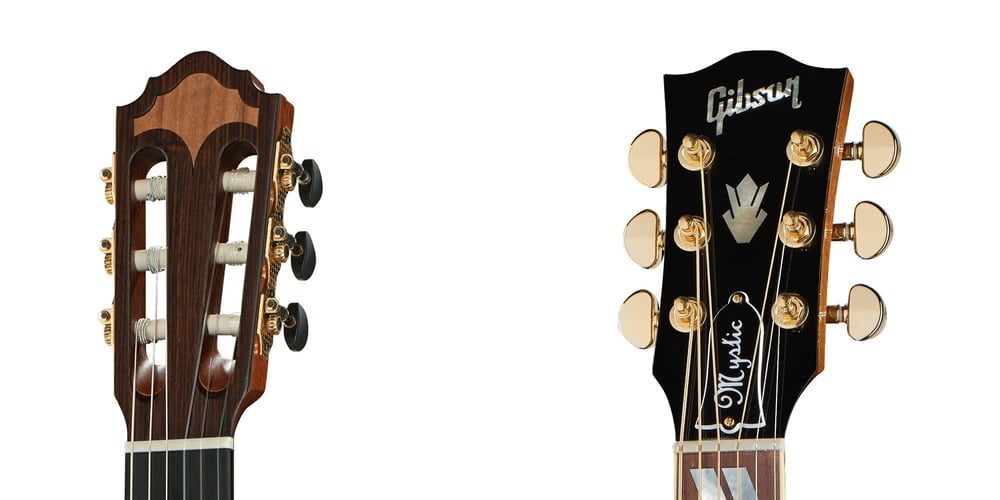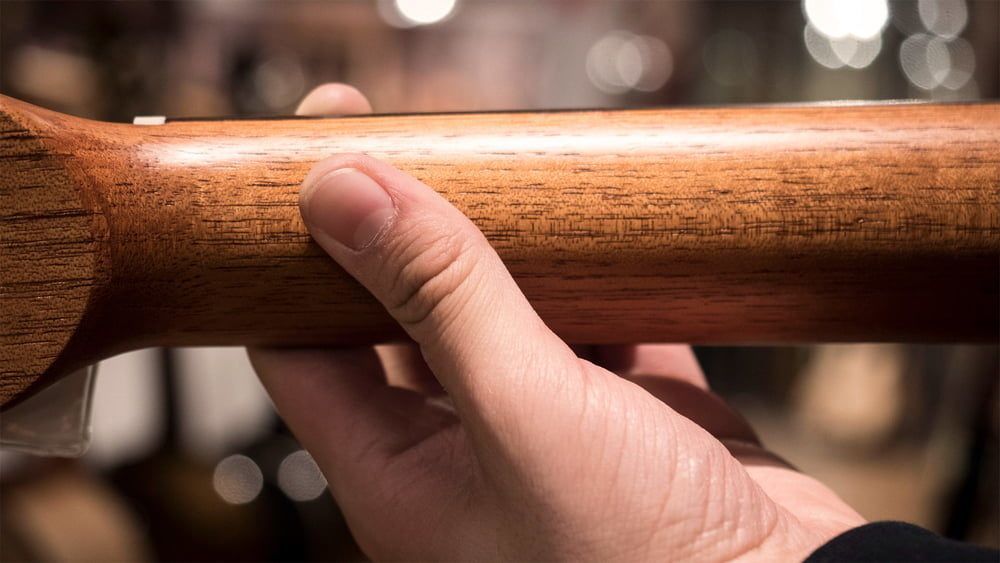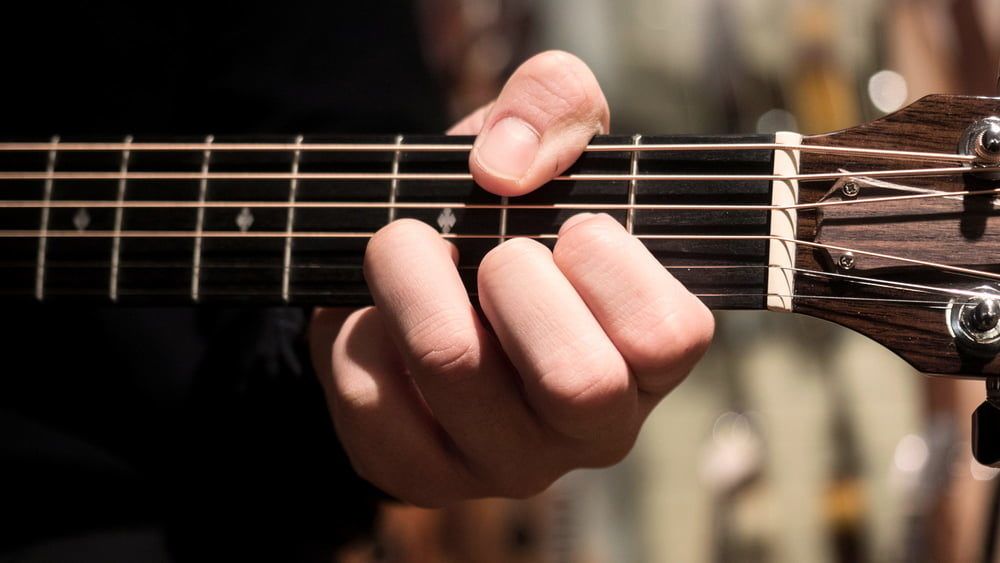3. Western vs Classical Guitar: What's the difference?
Strings
When it comes to a western guitar, steel strings are the name of the game. And guess what? These steel strings, which come in different thicknesses (also known as gauges), can even let you capture and amplify the sound using a magnetic pickup. Pretty cool, right?
Headstock
In contrast to classical guitars, western guitars are usually equipped with a closed headstock. That being said, there are also models with an "open" headstock.
Fretboard
The fretboard of a western guitar features inlays (usually in the 3rd, 5th, 7th, 9th, 12th, 15th, and 17th frets) that serve as markers and are often highly decorative. Additionally, small black dots on the side of the fretboard enhance accuracy when changing positions. Classical guitars often lack these markers on the fretboard.
Furthermore, the fingerboard of a western guitar is narrower. The width at the nut of a western guitar measures approximately 4.3cm, whereas the fingerboard of a classical guitar has a width of approximately 5cm. This wider spacing between the strings can cause unintended contact with adjacent strings, potentially disrupting their vibration. This requires practice!
Neck
Let's talk about the neck of a western guitar. It's got this cool steel rod called "truss rod" inserted inside of it. Now, the truss rod has an important job: It keeps the slender neck stable because those steel strings put a lot of tension on it. But that's not all! The truss rod also allows you to adjust the curvature of the neck. How cool is that?
To make adjustments, you can find the truss rod's adjustment screw either through the soundhole or in a small recess on the headstock, right above the nut. Usually, this recess is covered by a nifty little plate made of plastic or metal, known as the truss rod cover.
So, if you ever need to tweak your neck to get it just right, you know where to find that secret adjustment screw. It's like a hidden treasure on your guitar!
Playing Techniques
Alright, here's the deal with western guitars: The narrower neck of a western guitar can be a bit challenging for beginners who are used to the larger dimensions of a classical guitar. But hey, don't let that discourage you! You'll quickly get the hang of it and adapt to the new "playing environment." Plus, as you go higher up the neck, the fingerboard widens, making things easier.
But wait, there's more! The narrow neck of a western guitar actually comes with some cool advantages. You see, rock guitar legends like Eric Clapton and Jimmy Page prefer a hand position where the audience can see their thumb. Why? Because rock musicians often use their left hand's thumb to play or mute notes on the low strings. And guess what? The narrow fingerboard of a western guitar makes it way easier for the left-hand thumb to reach the thick E-string compared to a classical guitar with its wider neck. That's why playing many rock and pop songs on a western guitar is often a breeze compared to a classical guitar.
So, don't let the narrower neck scare you off. Embrace it and rock on!
When it comes to playing a western guitar, musicians often rest it on their right thigh while sitting or strap it on and rock out standing up. It gives them the flexibility to perform with flair and energy. On the other hand, if you opt for a classical guitar, it's a bit of a different story. Classical guitarists mainly play while sitting down, so they don't really go for that extroverted performance vibe. That's why classical guitars usually don't come with a strap button, and if you want to play them standing up, you'll have to retrofit the guitar with one. It's all about finding the style that suits you best!






